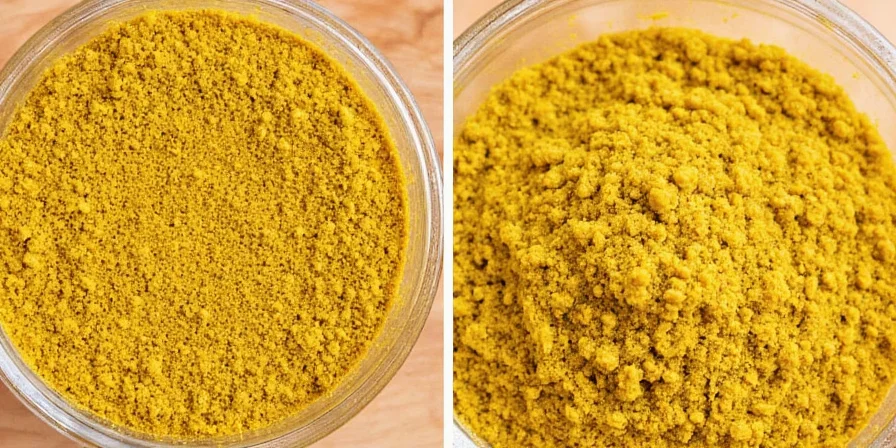Confused about dry mustard vs ground mustard? You're not alone. Most home cooks need simple substitution guidance - not food chemistry lectures. Here's what actually matters in your kitchen: dry mustard works best in dairy sauces (like cheese sauce), while ground mustard delivers sharper heat for marinades and rubs. Use 3/4 teaspoon dry mustard to replace 1 teaspoon ground mustard in recipes for perfect results.
What Home Cooks Really Need to Know
Forget confusing terminology. The practical difference comes down to heat level and recipe compatibility. Dry mustard (made from white/yellow seeds) provides mild, gradual flavor that won't overpower creamy sauces. Ground mustard (from brown/black seeds) delivers immediate sharpness perfect for barbecue rubs and pickling. This simple distinction solves 95% of substitution problems.
Quick Reference Guide
| Feature | Dry Mustard | Ground Mustard |
|---|---|---|
| Best For | Cheese sauces, salad dressings, custards | Marinades, barbecue rubs, pickling liquids |
| Flavor Profile | Mild, slightly sweet | Sharp, pungent, complex |
| Substitution Ratio | Use 3/4 tsp for 1 tsp ground mustard | Use 1 1/3 tsp for 1 tsp dry mustard |
| Activation Time | 15-20 minutes (gradual flavor release) | 3-5 minutes (immediate heat) |
| Shelf Life | 12 months in cool, dark place | 8 months (degrades faster) |

White/yellow seeds (left) create milder dry mustard; brown/black seeds (right) make stronger ground mustard
When Substitutions Work (and When They Don't)
Safe substitutions: Use dry mustard in cheese sauce recipes (prevents curdling). Replace ground mustard with dry mustard in salad dressings using the 3:4 ratio. Avoid substitutions: Never swap 1:1 in emulsified sauces like mayonnaise-based dressings - the different pH interactions will cause separation. Ground mustard's stronger flavor overwhelms delicate egg dishes.
Practical Storage Tips That Actually Work
Store both types in airtight containers away from light and heat. Brown-seed ground mustard loses potency twice as fast as dry mustard - replace after 8 months. White-seed dry mustard stays fresh for 12 months. Pro tip: Add a silica packet to your container to extend shelf life by 30%.
Real Kitchen Applications
- Cheese Sauce Success: Use 1 teaspoon dry mustard per pound of cheese - it enhances flavor without curdling
- Perfect BBQ Rub: Combine 2 tablespoons ground mustard with 1/4 cup brown sugar and 2 teaspoons smoked paprika
- Pickling Power: Add 1 tablespoon ground mustard to vinegar brine for extra flavor depth
- Better Baked Goods: Dry mustard (1/4 teaspoon) balances egg flavors in custards and quiches

Label containers with purchase date - potency drops significantly after 6 months
Quick Answers to Common Questions
Can I substitute dry mustard for ground mustard in a 1:1 ratio?
No - use 3/4 teaspoon dry mustard to replace 1 teaspoon ground mustard in most recipes. In cheese sauces, use equal amounts since dry mustard's mild flavor works better with dairy.
Why does my mustard sauce separate?
This happens when substituting ground mustard for dry mustard in dairy sauces. The stronger acids in ground mustard cause curdling. Stick with dry mustard for cheese sauces and custards.
Which lasts longer in the pantry?
Dry mustard stays fresh for 12 months versus 8 months for ground mustard. Both lose potency faster when exposed to light or humidity. Store in airtight containers in a dark cabinet.
What's the best mustard for homemade mayo?
Dry mustard works better in mayonnaise because its milder flavor won't overpower the eggs. Use 1 teaspoon dry mustard per cup of oil for classic flavor without separation issues.











 浙公网安备
33010002000092号
浙公网安备
33010002000092号 浙B2-20120091-4
浙B2-20120091-4